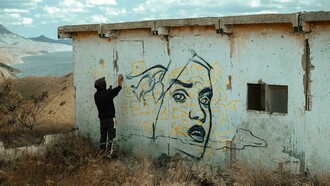Computer technology in postmodernity has been integrated into almost every area of everyday life in globalized life. Among them, art itself.
Interactive art, cyber art, technological art, media art, multimedia (...). The concept has different names and definitions. However, it can be said that virtually all the definitions describe them as an art where the viewer is invited to interact with a machine or technological interface.
Thinking about digital art as a new category of art requires an understanding of recent history, in view of the expansion of notions of art, creation and aesthetics, since in the course of the last century there has been a shift of functions in various fields of the arts.
A revolution of thought arose in which the individual has passed from observer / beholder to a being who establishes an active and creative connection.
The phenomenon that is the dilution of the frontier between the work of art and the spectator is due to the search of the art of positioning the spectator as its primordial element, having a very strong impact in the definition of the artist's role and in the relation that has with your own creation.
The increase of the participation of the spectator and the insertion of the art in the daily reality found in the digital universe a fundamental ally for the constitution of what is now called interactive art.
Analyzing the work of Hélio Oiticica, an experimental and performative artist, he started in his work the search for the participation of the public, in order to become an extension of the artistic work. In this way, art passes from the state of contemplation to affect behaviors, having an ethical, social and political dimension. Other artists followed him in this search for a new relationship with his work, altering our perception of the role of the spectator and the work of art.
Today, there are many artists who explore the interactivity of art and its relationship with the human being through digital processes. Expressions such as "interactivity", "interaction", "real time", "virtual", etc., are now adopted by artists.
The relations between art and technology, with their progressive character, accelerated with the evolution of the computational configurations. The processes promoted by the technological interactivity result in a man-machine relationship.
An outstanding moment for this movement is the exhibition of 1968 "Cybernetic Serendipity" in London, where for the first time works created with the help of the computer are presented and where the questions arise: "can the computer create works of art?"; Do works created with the help of computer science have an aesthetic value? "















